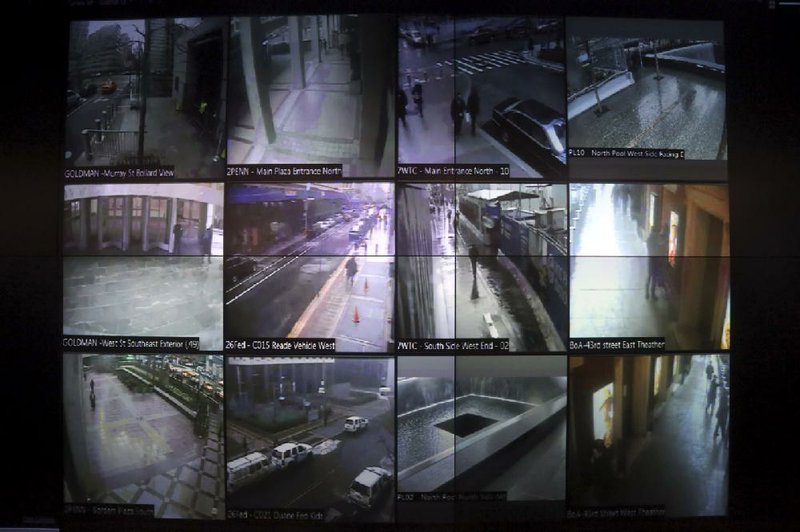NEW YORK — If a 911 call comes in about a possible bomb in lower Manhattan, an alert will pop up on computer screens at the New York City Police Department.
Instantly, officers are shown an interactive map of the neighborhood, footage from nearby security cameras, whether there are high radiation levels and whether any other threats have been made against the city.
In a click, police know exactly what they’re getting into.
While the scenario is hypothetical, the technology is real, developed in a partnership between the nation’s largest police department and Microsoft Corp. The latest version has been quietly in use for about a year.
The project could pay off in more ways than one: The Police Department could make tens of millions of dollars under an unprecedented marketing deal that allows Microsoft to sell the system to other law-enforcement agencies and civilian companies around the world. The city will get a 30 percent cut.
The Domain Awareness System, known as “The Dashboard,” gives easy access to the Police Department’s voluminous arrest records, 911 calls, more than 3,000 security cameras citywide, license-plate readers and portable radiation detectors - a compilation of data that raises privacy concerns for some civil-liberties groups.But the dashboard system mines existing tools and doesn’t create any new surveillance information.
Right now, it is used only in New York City police offices, mostly in the department’s counter terrorism unit. Eventually, the system could supply crime-fighting information in real time to officers on laptops in their squad cars and on mobile devices while they walk the beat.
“It works incredibly well,” said Jessica Tisch, director of planning and policy for the counter terrorism unit.
For example, officers used the system during a deadly shooting outside the Empire State Building in August. Dozens of 911 calls were coming in, and it initially looked like an attack staged by several gunmen. But officers mapped the information and pulled up cameras within 500 feet of the reported shots to determine there was only one shooter.
Analysts are cautious about the system’s profit potential, saying that largely depends on Microsoft’s sales efforts and whether any major competition arises. While there are data-drilling products made by other companies, they say the Police Department’s involvement could set the dashboard apart.
“This is the kind of stuff you used to only see in movies,” said analyst Rob Enderle of Enderle Group, a technology analysis firm in San Jose, Calif. “Getting it to work in a way that police departments can use in real time is huge.”
The venture began in 2009, when the New York department approached Microsoft about building software to help mine data for the Lower Manhattan Security Initiative, a network of private and public cameras and other tools monitored by the department’s counter terrorism bureau. Development cost the department between $30 million and $40 million, officials said.
“Usually, you purchase software that you try to work with, but we wanted this to be something that really worked well for us, so we set about creating it with them,” said Richard Daddario, the Police Department’s deputy commissioner for counter terrorism.
Officers were involved throughout the process with the programmers, offering advice on what they need during an emergency.
“It was created by cops for cops,” Tisch said. “We thought a lot about what information we want up close and personal, and what needs to be a click away. It’s all baked in there.”
The system uses hundreds of thousands of pieces of information. Security-camera footage can be rewound five minutes so officers can see suspects who may have fled. Sensors pick up whether a bag has been left sitting for a while. When an emergency call comes in, officers can check previous 911 calls from that address.
Prospective clients can customize it to fit their organization.
Dave Mosher, a Microsoft vice president in charge of program management, said the company started to market the system in August and is looking at smaller municipalities, law-enforcement agencies and companies that handle major sporting events.
He would not say whether any clients have been lined up and would not give details on the price except to say that it would depend on how much customization must be done.
Shawn McCarthy, an analyst with the research firm IDC, described the partnership - and outcome - as unusual in the tech world. “I see huge potential, but so much depends on the price and competition,” he said.
No firm timetable has been set on when the dashboard will be rolled out to the entire 34,000-officer department.
Information for this report was contributed by Bonny Ghosh of The Associated Press.
Business, Pages 19 on 02/25/2013
